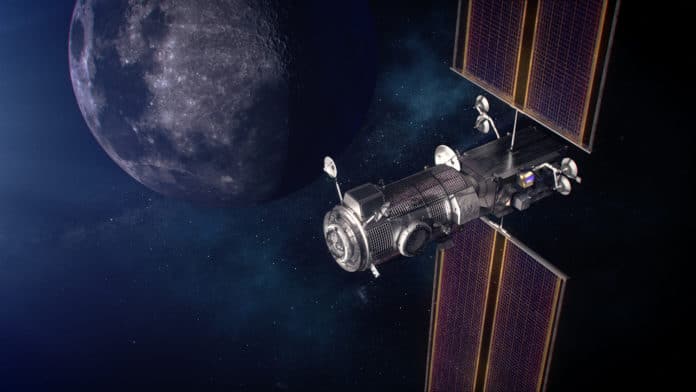NASA announced that Northrop Grumman will design and build the initial crew module of the agency’s Gateway lunar orbiting outpost. The space agency has awarded Northrup Grumman a $187 million to design the habitation and logistics outpost (HALO) for the Gateway, which is part of NASA’s Artemis program.
The module will be built on the basis of Northrop Grumman’s Cygnus spacecraft currently being used to deliver cargo to the International Space Station. The HALO will be the second module of the Gateway station, which will support future Artemis manned missions.
The first module to be created is PPE (Power and Propulsion Element), which will be built by Maxar Technologies, which received a $375 million contract from NASA in 2019. It will be equipped with high-power, 60-kilowatt solar electric propulsion. In addition to providing power and communications, its substantial maneuvering capabilities will allow the Gateway to change orbits and enable crews to reach any part of the Moon’s surface.
HALO will provide the pressurized living quarters where astronauts will spend their time while visiting the Gateway. About the size of a small studio apartment, it will provide augmented life support for spacefarers in tandem with NASA’s Orion spacecraft.
This is only the first fundamental phase of module development. Northrop Grumman will now design and determine module construction details. At the end of 2020, the project will undergo a thorough review, after which another contract for the construction and integration of the module with the already emerging PPE module will be awarded. Both the HALO residential module and the PPE electric drive module will launch together towards the Moon in 2023.
The agency says launching these two elements of the Gateway – HALO and PPE – at the same time reduces both cost and technical risks while enhancing the likelihood of mission success by eliminating the need to dock two separate elements in the orbit where the Gateway will operate.
“We’re making significant progress on these first two elements, including the incorporation of components from ESA (European Space Agency), the Canadian Space Agency, the Japan Aerospace Exploration Agency, and payloads from our research communities,” said Dan Hartman, Gateway program manager. “The new plan to integrate the two elements of Gateway demonstrates the capabilities of the agency and our partners to be flexible and reassess plans as needed. By launching the elements together, we’re able to significantly reduce Gateway’s risk profile and increase cost-effectiveness.”
